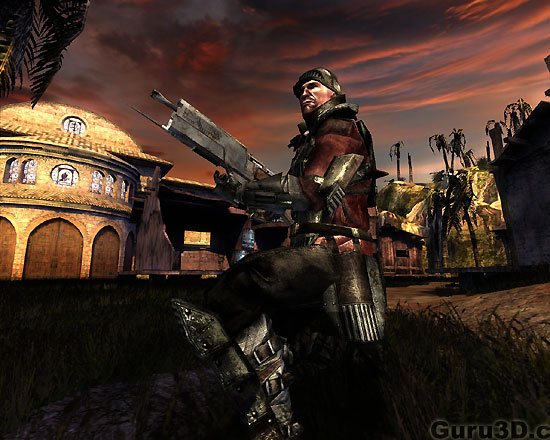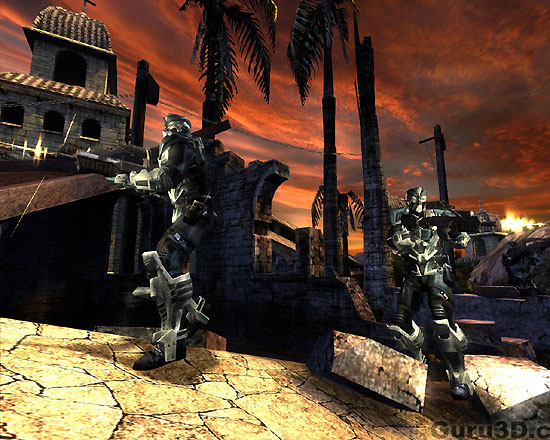Page 2
Hilbert: The game seems to have been built around the Kt engine. What can you tell us about that engine, which you have been working on for the past 6 years.
The rendering part of the Kt Engine has evolved in the past 2 years to adapt (like many others) to DX9 shader-oriented rendering. It is .fx format oriented, thus giving a high flexibility ranging from Transform And Lighting (TnL) fixed pipeline rendering to advanced SM 2.0 techniques.
Hilbert: Shaders have become a very important technology over the past year or two, what shader model(s) will this game support and why are shaders so important for this game? Judging from the screenshots I think at the least a fully compatible DX9 graphics card is required at the bare minimum for some serious eye-candy and likely even Shader Model 2. If this is the case, aren't you limiting your audience? Or are you fully backwards compatible to let's say a GeForce 3 ?
Technically speaking, only a few advanced effects (like post processing) are not available on TnL hardware, but we are unfortunately aware that TnL cards do not have the horsepower of latest hardware in term of batch processing and fill rate capabilities and this is not backwards compatible. The game should run on a TnL card, but in no case as smoothly as on a 6800/X800 ;)
The GeForce 3 and above series are all SM1.0 or greater compliant (apart from the MX versions I think), so it will run on them.

Hilbert: NVIDIA has been making a lot of buzz about Shader Model 3 where ATI is holding back SM3 until its next generation product to be released (soon). If your engine can utilize Shader Model 3 can you explain to me why exactly Shader Model 3 is slowly becoming important to programmers now and in the future. I look at Shader Models as a painter/artists does, expanding your palette and thus range of features/options. Do you think SM3 is an important development for game programmers?
We have not implemented SM 3.0 versions of our shaders because we did not have the need to. Similarly, we tried to keep our shader versions to 1.1 not because we couldnt do it technically but because our needs were rarely over what SM1 could give us. There are some cases where SM2.0 is needed, like frame-buffer distortion effects or virtual displacement mapping, but for typical rendering effects, the instruction limit of PS 1.1 can be coped with, with some care in writing the shaders.
Shader Model 3.0 pushes 2.0 limits in terms of instruction count to a threshold I would qualify of non reachable, no more concern on this point that was critical for SM1.1. Interesting features of SM 3 are Multiple Render Targets, Vertex Displacement and Dynamic Branching.
Hilbert: What is currently the biggest problem for a game-developer/programmer when it comes to graphics hardware, computational power, lack of certain features. What direction would you like to see 3D graphics accelerators go?
The biggest problem for graphic programmer now is not to create advanced effects, but to keep these effects fully integrated into a game, useable, useful and widely supported by a large scope of hardware.
It is also clear that GPU programming is converging toward classical programming and developers always looking for processing power are looking with greater interest at the GPU's high processing ability in terms of floating point calculations. Graphics accelerators are going toward multi processor approach, multiple graphical cards will act as rendering clusters/farms or as sub processors for the main CPU(s). I would like to see this overgrowth slow down as casual users probably cant and wont afford 2 or more high-end graphical cards to enjoy next generation games.
We must not forget that the main point in video games is game, although we all like astonishing rendering.

